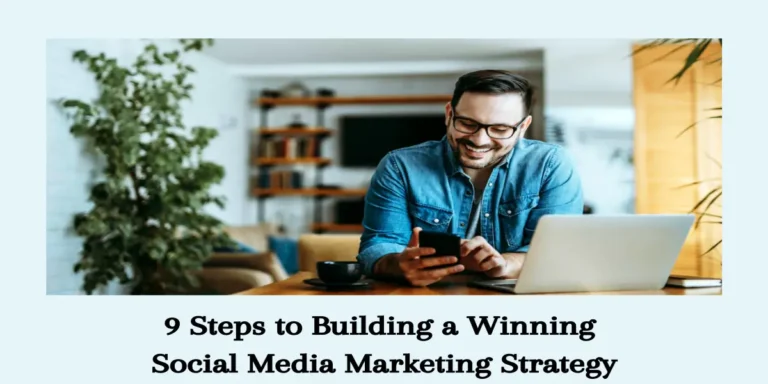Social Media Advertising 101: A Beginner’s Guide to Effective Campaigns
This is an introductory guide to social media advertising, covering the basics of setting up campaigns, targeting options, formats, and budgeting.
Meaning of Social Media Advertising
One kind of social media marketing is social media advertising, which involves using paid media to advertise your brand across all of its networks. This media supports a variety of creative mediums, including immersive experiences, photos, and videos, and is available in a variety of forms and places.
Another name for it is paid social. On social media, you target audiences, interests, and behaviors, as opposed to keywords and terms like you would with paid search. Additionally, social media advertisements are typically more branded, visually appealing, and local to the site, making them occasionally difficult to recognize as such.
Related: Paid Social Advertising Strategies That Convert: A Data-Driven Approach
How Social Media Ads Work
Social ads are based on audience targeting, whereas search ads mostly use keyword targeting. Although every platform has unique features, configurations, and formats, they all have certain common characteristics:
Auction style: Social advertising is a PPC auction, similar to Google advertising, in which an algorithm decides placements and prices based on a variety of factors, such as ad quality, maximum bid, and historical performance.
Campaign goals: Selecting a goal is the first stage in developing a campaign for the majority of platforms. Three typically stand for the top, center, and bottom of the funnel.
- Awareness and Reach
- Engagement and leads
- Sales and conversion
Targeting: You may make retargeting and lookalike audiences, as well as target users on each platform based on their demographics, interests, and behaviors. Although each platform is unique, this Facebook audience targeting guide can give you a general idea.
Account structure: Each platform includes an account structure that enables you to group ads and subsequently group groups into campaigns, even though naming conventions differ between platforms.
Related: How to Create a Social Media Strategy That Delivers Results
Types of Social Media Advertising
Social media sites provide many types of advertisements to assist you reach your subscribers. Here are some common formats for social media ads:
- Images adverts
These are some of the simplest social advertisements. They display a static image alongside descriptive text. On many social media networks, the image and content include outbound connections to your website or eCommerce store.
- Video advertisements.
A video ad includes a short video clip and a text caption. For example, on Facebook and Twitter, outbound links can be shown in the video itself or in the accompanying text.
- Carousel advertisements.
These advertisements include a series of images or videos that social media viewers can scroll through. These are popular on Facebook and Instagram, where carousel ads can contain up to ten photos or videos each.
- Collection advertisements.
A collection ad on Facebook is similar to a carousel ad, except it has a major image followed by three smaller images, with the opportunity to expand the ad and explore other product choices.
- Dynamic advertisements.
A dynamic social media ad is interactive, so it changes as the user interacts with it. Surveys and mini-games are two examples of social advertisements.
- Story ads
Stories are small bits of content that are displayed on a user’s feed for a set amount of time, typically 24 hours. Snapchat pioneered the Stories feature, which other platforms, most notably Instagram, later embraced. Instagram does not allow clickable links in a user’s normal feed, although it does allow them in story advertising.
- Message adverts
These social network adverts appear in Messenger, a popular messaging software developed by Meta, the same company that created Facebook, Instagram, and WhatsApp. These paid advertisements are displayed in the user’s message feed, alongside correspondence from other platform users.
Related: Guides to Build an Unforgettable Social Media Brand for High Engagements
Getting Started with Social Media Advertising
Getting started is the most difficult aspect of any advertising strategy. However, once you cross off these fundamental steps, you ought to feel confident enough to make the plunge!
- Recognize your audience.
As with any advertising plan, you must be certain that you understand your target market. Utilize your current client information, conduct market research, and examine analytics from current platforms to gain an understanding of what might be successful. Finding out who to target, what to target them with, and when to do it will be made easier by this. You may then gain even more precise insights into who is viewing and interacting with your advertising after you begin running them and gathering data.
- Select a channel to begin with.
Although a cross-channel advertising plan is crucial, you must first become familiar with the platforms before attempting to integrate them. Your audience will choose the ideal channel, although Facebook is usually a smart place to start.
- Set some broad objectives
What do you hope your social media advertisements will accomplish? It will be difficult to pinpoint precise measurements until you begin, so there’s no need to set the traditional SMART targets here. However, depending on your main objective (such as awareness, lead generation, or conversions), you can usually determine which campaign goal you’ll start with.
- Examine benchmarks
Your industry, audience, optimization plan, and other factors will all affect how much you pay for your social media advertisements, but it’s always a good idea to acquire a ballpark estimate before you start so you can establish some expectations for your budget.
- Just get going
The best course of action for small businesses just starting is to get started and learn as you go. Additionally, social media advertising platforms require time to learn, so the earlier you begin advertising, the sooner you can begin gathering the information the platform requires to begin optimizing your ads.
Related: Why Use Social Media Marketing? | Benefits for Businesses of All Sizes
Top Benefits of Social Media Advertising
Like any PPC approach, social media advertising offers brands several benefits. Some justifications for social media advertising are as follows:
- Engagement: Users can engage with social media ads by liking, sharing, and commenting in addition to clicking on them.
- Formats: As previously stated, a variety of media kinds and formats are supported by social media advertisements.
- Targeting: Granular targeting is made possible by social media ads since consumers provide personal information about themselves on these networks.
- Not disruptive: Social media advertisements are generally less disruptive than organic posts on the platforms because it’s difficult to tell them apart.
- Economical: PPC typically generates a 200% return on investment. A less expensive option for focusing on your competitors’ search engine audience is paid social media.
- Brand awareness: In addition to their size, social media networks offer visual advertisements that you may personalize to fit your style and branding.
Related: Choosing the Best Social Media Platforms for Your Business: A 2025 Guide
Best Social Media Advertising Platforms
Every social networking site has its core user base and unique set of features. You might decide to simultaneously advertise on several social media channels to increase the reach of your digital advertising. A summary of some of the most popular social media platforms is provided below:
- Facebook: With more monthly active members than any other social media network, Facebook is Meta’s flagship product. It gathers vast amounts of user data, allowing you to target your audiences with precision.
- TikTok: Video-centric TikTok is the fastest-growing social media site in the U.S. Its recommendation algorithm instantly identifies user interests. A normal TikTok ad shows in a user’s feed and resembles a user-generated TikTok, except for a small “Sponsored” tag beneath the video’s title.
- YouTube: YouTube, which is owned by Google, has more active users than Facebook. While some YouTube users only view videos passively, a large number of users actively participate in comment sections and create video reactions to previously posted content. Masthead advertisements, bumper ads at the start and finish of videos, in-feed video ads, and non-video ads that show up right outside a video window are all part of YouTube’s ad suite. Similar to traditional Google search advertisements, you must first create a Google advertisements account and select a target audience before you can promote on YouTube.
- Pinterest: Pinterest is a social networking network that offers hyper-curated feeds based on a user’s declared interests. Pinterest advertisements may be especially beneficial for e-commerce businesses that sell products associated with food, fashion, home décor, cosmetics, and handcrafted goods. It might be challenging to predict the cost of your social media advertising on Pinterest because the platform uses an auction method to sell ads. Additionally, you might discover that postings that aren’t advertisements—known as organic posts—can also increase Pinterest user traffic.
- Instagram: Instagram is Meta’s social networking platform that focuses on photos and videos. You can make advertisements that work with the Instagram photo stream, Reels (videos), and Stories (posts that delete themselves). Because of Instagram’s devoted user base and targeted advertising tools, many Shopify merchants have created their own Instagram success stories. Instagram advertising can be customized to target particular goals, such as website traffic, brand exposure, lead generation, and clicks to an external landing page.
- Twitter: Twitter has cultural currency because so many journalists and celebrities prefer to communicate on it, even though its user base is less than that of mega-platforms like Facebook, YouTube, and Instagram. Text makes up the majority of Twitter’s content. Nonetheless, it offers a variety of static images, videos, and carousel-style advertisements that highlight several products. Additionally, you may sell straight from Twitter using your Shopify store.
- LinkedIn: LinkedIn’s focus on business makes it stand out in the social media landscape. LinkedIn is used by users to advertise business-to-business services, recruit for jobs, and look for their positions. With features including text ads, lead-generating forms, sponsored messaging, sponsored content, and dynamic ads that react to user input, it’s a well-liked platform for business-to-business advertising. Businesses have the chance to share their company’s narrative on LinkedIn. You could wish to make a deliberate effort to develop a micro-brand on LinkedIn in addition to purchasing an ad. For Shopify store owners, LinkedIn itself provides online courses aimed at enhancing e-commerce outcomes through social media advertising.
Related: 9 Steps to Building a Winning Social Media Marketing Strategy
Tips on Social Media Advertising
Although the best practices for each platform differ, these broad guidelines will help you succeed on all of them.
- Make use of user-generated content: You should consider employing your best-performing user-generated content as your ad creative in addition to your most interesting posts. These are excellent testimonial advertisements that blend evaluations and relatability to create trustworthy, profitable, and awesome advertisements.
- Keep mobility in mind: It’s undoubtedly obvious, but it’s still important to remember to be mobile. Mobile is the primary way that most social media platforms are accessed, however, some are mobile-only. When you adhere to the picture specifications, your mobile ad formatting naturally takes care of itself. Additionally, as you consider the offers you are advertising and the way you are distributing your advertisements, keep a mobile attitude in mind.
- A/B test: Always experiment with different ad formats to determine which ones work best. A/B testing involves altering just one variable, such as the image, copy, or, in the example below, the image style.
- Employ a variety of campaign types: Because various businesses have different goals (app installs vs. store visits, for example), and because you will have varied goals inside your funnel, each paid social platform offers a variety of objectives for your campaign. In one campaign, you could want to use a top-of-funnel offer to create leads, while in another, you might want to use a more bottom-funnel approach to retarget website visitors. Therefore, develop a full-funnel plan by creating many campaigns and utilizing the various objectives at your disposal. By doing this, you can make the most of every platform.
- Combine with search: I mentioned cross-channel advertising a little earlier. Start considering how you may combine your search and social media ads once you’ve mastered your social media advertising approach. For instance, you could target a specific Facebook audience based on how they interacted with a search ad offer, or you could use the best-performing keywords from your Google Ads data in your Facebook ad copy.
- Don’t let your creative go stale: Social media feeds are continuously updated in addition to being very visually appealing. Your ad creative must remain current more than on any other platform.
Related: How To Promote Your Business on Social Media
Conclusion
In digital marketing, social media is one of the pillar channels. However, its numerous platforms set it apart from other pillars like email and search engines. And not in the sense of Google vs. Bing. Massive audiences on every platform are ready for advertising.
Businesses can engage with their target audience and achieve significant outcomes through social media advertising. You can use social media to your advantage and boost your marketing by establishing clear objectives, knowing your target market, selecting the best platforms, creating interesting content, and cultivating connections.







